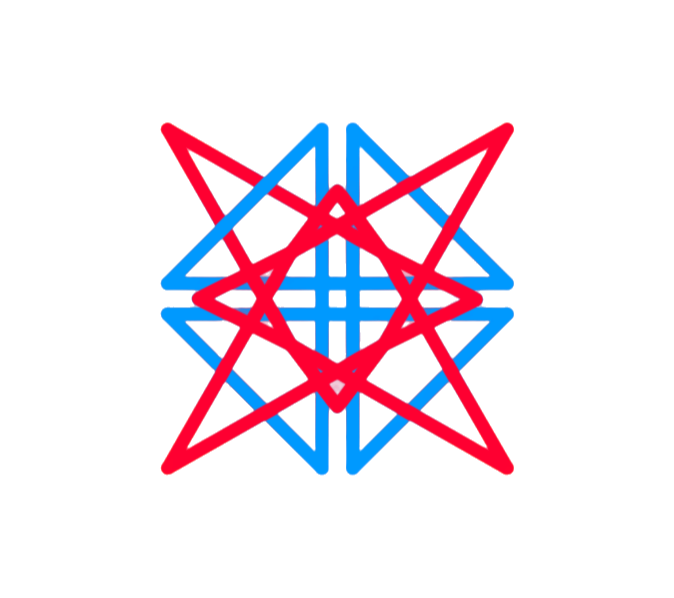Alan R. Izarraras Gómez
last updated (20/06/25)
Adapting to an environment is a non-linear process in a search for the best solutions to survival. There are these periods of droughts in evolutionary progress followed by changes that really make a difference and explode the adaptive capacity of biological systems. A prime example of this was the merging of ancient Eukaryotic cells with ancient Prokaryotic cells forming a novel cell type that contains what we now know as mitochondrias (the power house of the cell!). This great conjunction represented a stark increment in adaptability. Why? Primarily because it broke down the task of survival into two smaller components that each party could specialize on. One component was about being robust to outside perturbation and providing safety (ancient eukaryote), while the other component was the ability to harness energy from the medium (ancient procaryote). Of course each individual cell (pre-merger) could more so do these two task independently; but by conjugating they found that specializing and delegating tasks was a far superior strategy. This way each cell could optimize for their particular job which means that each sub process could be made much more efficiently and thus provide a surplus of energy and resources.
In this story, natural selection is performing a computation in the sense that it is taking two "biological semantic building blocks" (ancient prokaryote cell + ancient eukaryote cell) to do operations and functions within a larger context. Thereby providing a novel ordering paradigm for new computations to take place from a broader system. This is all habilitated by the will to survive which provides a cohesive glue for the individual semantic blocks. The result can therefore be seen as a modularized function with two sub instructions that provide an enhanced efficiency by using the good old divide & conquer strategy.
We can think of other instances of biological computations and even begin to describe them in terms of the amount of memory and generalization they provide. Imagine a pool of genes each independently evolved to solve different problems, when these are merged within the same molecule, this merger enhances the total memory of the system and provides opportunity for modularization so that they may provide solutions to different problems through non-redundancy. Multicellularity is another one, where a bunch of cells figured out they could each come together and specialize to each take of different aspects of survival, eventually forming tissues and eventually forming organs and eventually forming a central nervous system. More recently, came a merging of minds that allowed culture and language. Notice the magnitude of each of these evolutionary jumps, notice the amount of survivability that they provide and most important of all, notice that these are computations. These are semantic blocks that were and are stacked together in order to form higher level programming languages enabled by each other. Each layer unlocking a new ordering paradigm with novel semantic blocks that allow the cohesion to modularize and solve problems by dividing them into smaller and smaller components; hence achieving far greater rates of adaptation.
In these stories there are things in common that can be abstracted. There is a merging of two separate biological entities each with a non-redundant strategy of solving survival. The merging allows breaking down the demands of life into smaller problems to solve which are picked up by each of the parts, specializing in each task with time which results in an energy surplus to relieve stress. How this works is you increase specialization over time by stacking sub processes which overall augment problem-solving. The more unique sub processes a biological system can stack, the broader of tasks it can take on which all in all results in higher agency. An important detail is these re-ordering operations require a cohesive glue, which is essentially provided by natural selection and the environment via the burden of survival.
Joining these biological memory blocks together into new compartmentalization paradigms broadens the memory and compute capacity of the new system in a non-linear fashion. This means that there is likely a deeply embedded relationship between specialization and agency. The more subagents a system has the more they can be allocated to break down tasks into smaller problems, the more these minute tasks will be optimized, the more free energy is available, the more exploration it can do and the more generalization a system can attain! The result is higher agency.
Here is a quick overview.
A problem --> divide and conquer --> specialization --> new ordering paradigm --> things get optimized --> free energy available --> Higher agency
Prediction!
Following this reasoning I predict human life will eventually emerge with AI. Let's just hope this merger is us absorbing AI and not AI absorbing us. In a sense, the merger has already happened since modern man cannot live without computers. AI essentially tackles the problem of having extremely quick access to the knowledge reservoir of all our cumulative culture that is impossible to attain by a single individual. The result of the merger is humans with higher agency that are more informed and can make better decisions which in turn greatly amplifies individual ability to take action; which of course is an evolutionary sound goal.
